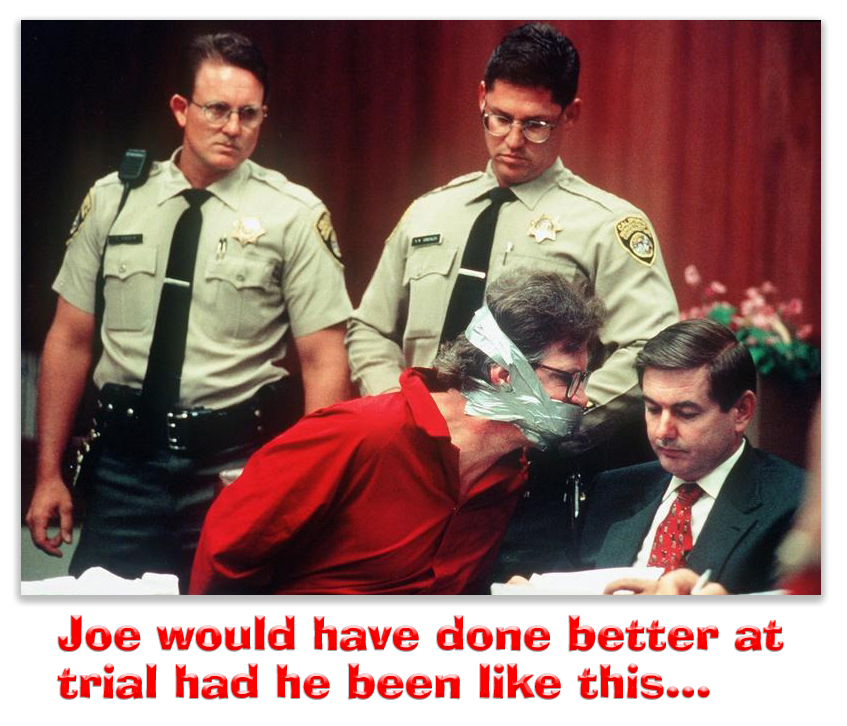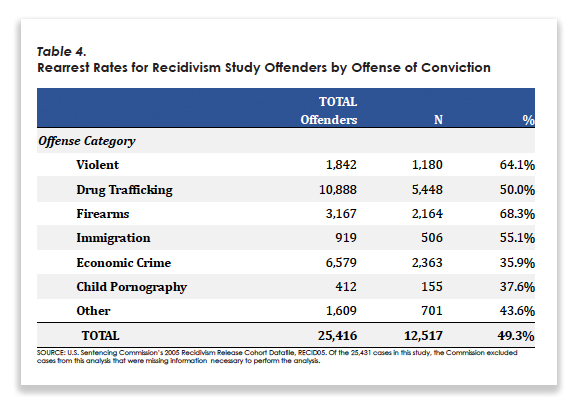We post news and comment on federal criminal justice issues, focused primarily on trial and post-conviction matters, legislative initiatives, and sentencing issues.
SEX OFFENDERS NOW FREE TO WASTE TIME ON FACEBOOK
There may be nothing easier for a legislator than to enact laws that punish and restrict people convicted of sex offenses. Who’s going to complain? The sex offenders? Well, sure, but who cares what they think?

It turns out that the Supreme Court cares. North Carolina wanted to be sure sex offenders lacked access to “vulnerable victims,” that is, kids. So far, so good. States may “enact specific, narrowly tailored laws that prohibit a sex offender from engaging in conduct that often presages a sexual crime,” as the Court put it yesterday. But North Carolina – as legislatures are wont to do – went too far.
The Tarheel State passed a law that prevented anyone on the sex offender registry from using any Internet site that permitted minors to have accounts. Offenders like Lester Packingham, who at age 21 had sex with a 13-year-old girl. Packingham got into hot water with the law again in 2010, when he beat a traffic ticket, and took to Facebook to thank God for his triumph. A police officer saw his post, and saw to it that Lester was convicted of a felony for using Facebook.
 We confess that we can think of any number of people who should be convicted of felonies for what they post on Facebook, but the North Carolina statute seemed to be killing flies with a sledgehammer. Lester did, too, and took his lament to the Supreme Court. Yesterday, the Supreme Court agreed with him that the North Carolina law violates the Constitution’s guarantee of freedom of speech.
We confess that we can think of any number of people who should be convicted of felonies for what they post on Facebook, but the North Carolina statute seemed to be killing flies with a sledgehammer. Lester did, too, and took his lament to the Supreme Court. Yesterday, the Supreme Court agreed with him that the North Carolina law violates the Constitution’s guarantee of freedom of speech.
Justice Kennedy, in his usual sweeping style, wrote for a unanimous court that the North Carolina statute went too far, , because it stifles “lawful speech as the means to suppress unlawful speech.” By barring sex offenders from using social-networking sites, he argued, the state “with one broad stroke bars access to what for many are the principal sources for knowing current events, checking ads for employment, speaking and listening in the modern public square, and otherwise exploring the vast realms of human thought and knowledge.” “In sum,” Kennedy concluded, “to foreclose access to social media altogether is to prevent the user from engaging in the legitimate exercise of First Amendment rights.”
Justice Kennedy wrote,
Today, one of the most important places to exchange views is cyberspace, particularly social media, which offers ‘relatively unlimited, low-cost capacity for communication of all kinds,’ to users engaged in a wide array of protected First Amendment activity on any number of diverse topics. The Internet’s forces and directions are so new, so protean, and so far-reaching that courts must be conscious that what they say today may be obsolete tomorrow. Here, in one of the first cases the Court has taken to address the relationship between the First Amendment and the modern Internet, the Court must exercise extreme caution before suggesting that the First Amendment provides scant protection for access to vast networks in that medium.
The Justice took a direct swipe at legislators who think that no restriction is too harsh where sex offenders are concerned: “Like other inventions heralded as advances in human progress, the Internet and social media will be exploited by the criminal mind. It is also clear that sexual abuse of a child is a most serious crime and an act repugnant to the moral instincts of a decent people, and that a legislature may pass valid laws to protect children and other sexual assault victims. However, the assertion of a valid governmental interest cannot, in every context, be insulated from all constitutional protections.”
 Justice Samuel Alito, in a concurring opinion that was joined by Chief Justice John Roberts and Justice Clarence Thomas, agreed with Kennedy – to a point. Justice Alito acknowledged that states have an interest in protecting children from abuse, writing that “it is legitimate and entirely reasonable for States to try to stop abuse from occurring before it happens.” But, he noted, the North Carolina law under which Packingham was convicted must ultimately be deemed unconstitutional because it also bars sex offenders from gaining access to “a large number of websites” – including, but not limited to, Amazon, The Washington Post, and WebMD – “that are most unlikely to facilitate the commission of a sex crime against a child.”
Justice Samuel Alito, in a concurring opinion that was joined by Chief Justice John Roberts and Justice Clarence Thomas, agreed with Kennedy – to a point. Justice Alito acknowledged that states have an interest in protecting children from abuse, writing that “it is legitimate and entirely reasonable for States to try to stop abuse from occurring before it happens.” But, he noted, the North Carolina law under which Packingham was convicted must ultimately be deemed unconstitutional because it also bars sex offenders from gaining access to “a large number of websites” – including, but not limited to, Amazon, The Washington Post, and WebMD – “that are most unlikely to facilitate the commission of a sex crime against a child.”
 Having said that, however, Alito disputed any suggestion that cyberspace is “the 21st century equivalent of public streets and parks” over which states had “little ability to restrict the sites that may be visited by even the most dangerous sex offenders.” Arguing that “there are important differences between cyberspace and the physical world,” Alito disapproved of what he described as Kennedy’s “loose rhetoric” and “undisciplined dicta” in the majority opinion.
Having said that, however, Alito disputed any suggestion that cyberspace is “the 21st century equivalent of public streets and parks” over which states had “little ability to restrict the sites that may be visited by even the most dangerous sex offenders.” Arguing that “there are important differences between cyberspace and the physical world,” Alito disapproved of what he described as Kennedy’s “loose rhetoric” and “undisciplined dicta” in the majority opinion.
The opinion will provide considerable support to federal prisoners whose terms of supervised release contain sweeping limitations on Internet access.
The Supreme Court has 12 cases yet to decide before the end of next week, including
• Sessions v. Dimaya (formerly Lynch v. Dimaya) (does Johnson apply to 18 USC 16(b)?)
• Lee v. United States (ineffective assistance of counsel);
• Turner v. United States (Brady evidence case);
• Weaver v. Massachusetts (ineffective assistance of counsel);
• Maslenjak v. US (loss of citizenship over immaterial false statement); and
• Davila v. Davis (does ineffective assistance of habeas counsel overcome defaulted ineffective assistance of appellate counsel claims?)
The Supreme Court will issue more opinions on Thursday, June 22, 2017
Packingham v. North Carolina, Case No. 15-1194, reversed 8-0, 3 concurrences
– Thomas L. Root





















